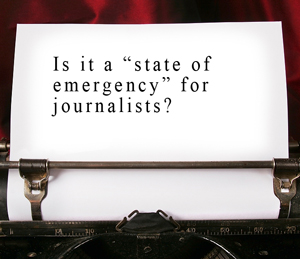
Are Traditional Journalists the Next Endangered Species?
This post may contain affiliate links or Google Ads and we may earn a small commission when you click on the links at no additional cost to you. As an Amazon Affiliate, we earn from qualifying purchases. This is at no additional cost to you and helps with our website expenses.
In my last post entitled, “Cyber Journalism and the Future of New Media”, we embarked on a pretty sensitive topic for many journalists. The fact of the matter is that journalists and other professional writers may have a much harder time making a living, due to the decreased relevancy of print media.
Considering that many printed publications are solely supported by advertisements, there is to some extent a “state of emergency” for those that have pursued a career in journalism—or at least the need to broaden their credentials.
What Does a Journalism Degree Include These Days?
Or maybe I should ask what a journalism degree does not include. Let’s take the course curriculum at Hank Greenspun School of Journalism and Media Studies
at UNLV as an example. They have a comprehensive degree in Journalism that covers everything from Copywriting to the impact of Electronic Media in Las Vegas.
The assistant director at the college and faculty expert in Social Media and Virtual Worlds, Dr. Lawrence J. Mullen, has even addressed this topic in his book Las Vegas: Media and Myth. They know that the times are changing and are ramping up their courses to reflect that. Unfortunately, anyone that received a degree in journalism before 2007 may not be prepared for the major turn in journalism to visual and social media online.
Even the Electronic Media Practicum is optional at UNLV. They choose between that and Interviewing. Let’s face it, what passionate journalism student doesn’t want to learn interviewing? Okay, I’m sure there are some…
What Does a Journalism Degree Need in Today’s World?
 I’m going to propose that we need classes specifically geared for online writing standards. Even the AP Styleguide is broadening their path to allow for some of these standards. (After all, what do they do when web jargon becomes embedded in the culture? Embrace it and move on–as they should.)
I’m going to propose that we need classes specifically geared for online writing standards. Even the AP Styleguide is broadening their path to allow for some of these standards. (After all, what do they do when web jargon becomes embedded in the culture? Embrace it and move on–as they should.)
No longer do you just need an engaging headline and an intelligently thought out article. You need sub-headlines, keywords, meta descriptions (that are written as if it’s copy to get someone to click through the SERP page), and latent semantic indexing (yeah, it’s a mouthful–and sometimes even harder to swallow than to say). The Web is even changing the rules for title case, as case study after case study shows Web readers don’t always prefer traditional title case style points.
The attention span of the average reader is short, and it keeps getting shorter.
No longer are we grabbing the attention of someone; thanks to the Web, we are stealing it away from somewhere else. You need guideposts to tell your reader why they should keep reading, as well as words in those guideposts that will snag search engine algorithms, to get a piece listed as relevant to a certain topic.
Think it’s beneath you to learn how? No problem! There are plenty of amateur bloggers out there that have and will at no charge—or who will do so for the (usually) meager income provided by Google Adsense.
My point is that it’s tough out there for the traditional journalist. It’s going to become impossible for those who refuse to embrace “new media”. Those who do, will be able to forge their paths with the fortitude and commitment that has always been requested of the passionate journalist.

